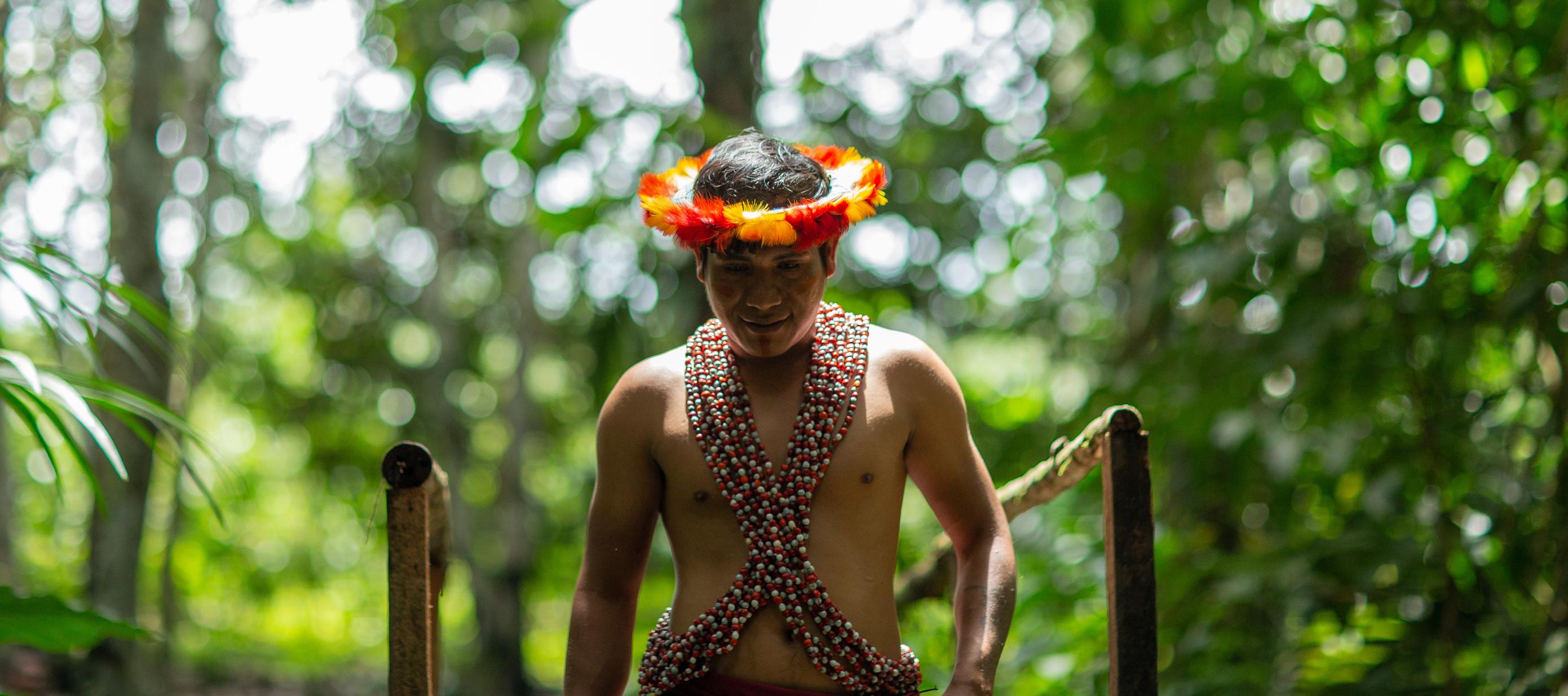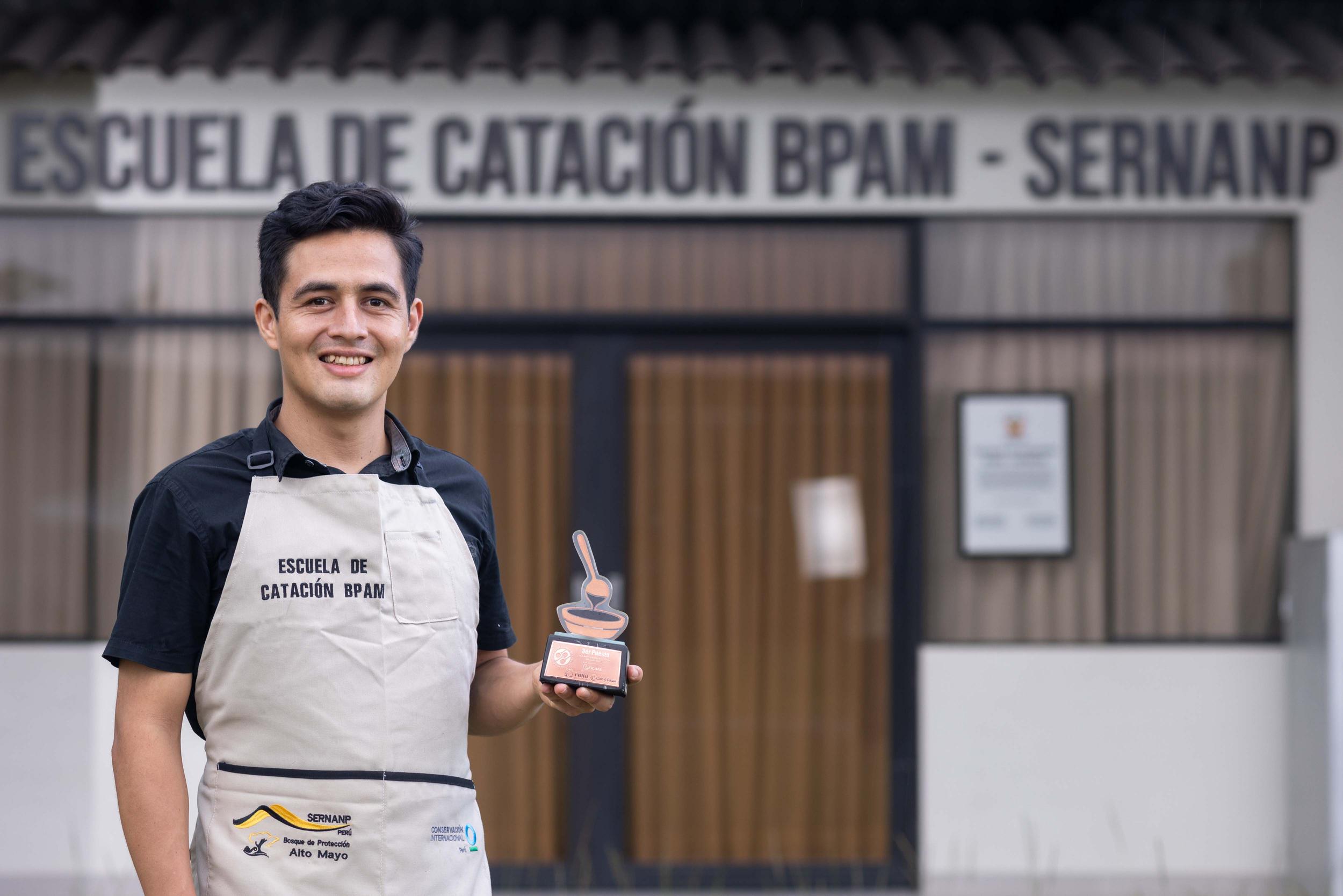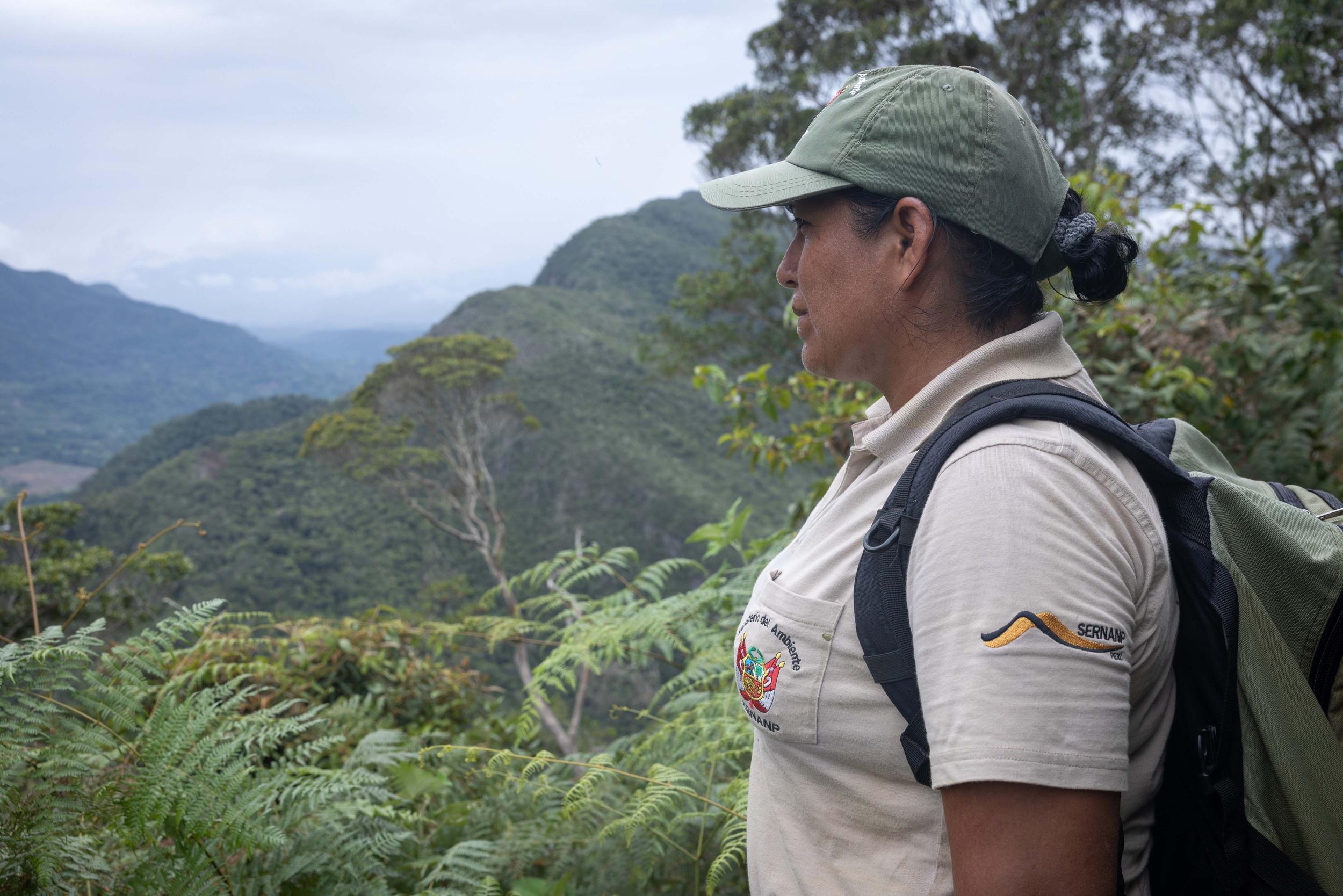By Sophie Bertazzo
November 13, 2025
Meet the people bringing a Peruvian forest back to life
Conservation International is helping local communities write a new chapter for the Alto Mayo Forest — one of restoration, culture renewal and hope.
10 min

By Sophie Bertazzo
November 13, 2025
Conservation International is helping local communities write a new chapter for the Alto Mayo Forest — one of restoration, culture renewal and hope.
10 min
In the foothills of the Andes, where mountains slope into the Amazon basin, the forests of Alto Mayo thrum with life.
The Alto Mayo, named for the upper stretch of the Mayo River, protects the cloud forests where the river begins — a landscape of steep slopes, hidden valleys and unique pockets of biodiversity.
But its richness has also made it vulnerable. Since the 1970s, waves of migrants have come to grow coffee and cacao, clear-cutting forests into farmland and straining the ecosystems that support the region.
For 15 years, Conservation International has worked with local people to halt the deforestation of Alto Mayo, by helping them grow their crops in ways that sustain nature. Today, the success of that program has helped it reach new, far-flung corners of the greater Peruvian Amazon.
Here are stories of the forest’s people — the Awajún Indigenous communities, the coffee farmers, the patrollers, the bird watchers — who study, protect and farm the forests that sustain them.

Joimer Vargas used to help his father in the coffee fields before school in the morning.
Today, he is one of the best coffee tasters in Peru.
Coffee farming runs three generations deep in the Vargas family. When Conservation International introduced conservation agreements in 2011, the family saw the opportunity reaffirm and build on what they already believed: that good farming depends on a healthy forest.
In exchange for a pledge to stop cutting down the forest, the Vargus family and other signers receive technical training, seedlings and trees, and access to specialty-grade coffee markets. “With technical assistance and inputs, the plants began to produce a good, organic coffee. A sustainable coffee,” said Vargas.
By the time Vargas was finishing high school, the community’s coffee cooperative had begun training young people to manage coffee quality control — a key step toward making their operation fully self-sustaining.
“I was in my last years of high school when they started to train young people for quality control,” Vargas said. “Fortunately, I had the opportunity to participate. Although I didn’t pass the final selection, I returned to the farm with a new understanding of what it means to produce coffee.”
Vargas didn’t give up. He went on to earn certification from the Coffee Quality Institute, which recognizes professional coffee tasters around the world — an achievement that helped raise the profile of Alto Mayo’s coffee in international markets.
But for the family the shift wasn’t about prestige — it was about protecting nature.
“My parents had already left the forest by then,” Vargas said. “We left the whole farm to recover back to its natural state and not continue wearing away the soils.” Today, they farm a plot outside the protected forest, replicating the sustainable practices they’ve learned through their partnership with Conservation International — restoring shade, reducing chemicals and focusing on soil health.
When customers began to visit the farm, Vargas’s father took quiet pride in the change: “I have the luxury of having my own taster — and even certified.”

Moisés Asagkai, a member of the Indigenous Awajún people, has lived in the forests of Alto Mayo his entire life.
His community came to this region shortly before the 1950s, part of a broader migration of Awajún families seeking forest land for subsistence and community life. “The forest was like our market,” Asagkai said. “From there we brought vegetables, animals and even fish to live on.”
That way of life began to shift in the 1980s, when settlers arrived on the newly opened road into the forest. Many Awajún families, unfamiliar with money, began renting parcels of their mountain land to the newcomers — a practical choice that inadvertently accelerated deforestation.
“As the decades passed, the forests were cut down, taking traditional Awajun knowledge and culture — myths, medicines, where to harvest, fish and hunt —with it,” explained Diego Dourojeanni, who leads Conservation International’s work with Indigenous communities in Alto Mayo.
Recognizing what was at risk, Asagkai led the community’s next major shift: securing the first conservation agreement between Feriaam (the Awajún Regional Indigenous Federation of Alto Mayo) and Conservation International.
“We Awajún have never been farmers,” Asagkai said. “This is the first time we’ve practiced agriculture. They taught us what it means to grow a crop like cacao ourselves. We learned that we can work without renting and still earn more.”
In 2021, Feriaam and Conservation International expanded the model to further integrate the role that sustainable livelihoods play in reviving cultural identity. “We call the project ‘Tajimat Pujut,’ which broadly means ‘good living,’” explained Braulio Andrade, formerly with Conservation International. “But it’s much more than that. It is the state of abundance for the Awajún — as a community, and as human beings.”
As incomes rise and forest health improves, herbicide use and pollution rates have plummeted. Today, the communities operate one of the largest production hubs for Vanilla pompona, a native Amazonian vanilla, in the Peruvian Amazon.
But the greatest impact, according to Asagkai, can’t be measured in hectares or dollars: “Now, the settlers who live within the community have been able to learn the value of our traditions, our ceramics and our language. And so, little by little, our Awajún culture is being recovered.”

For much of her youth, Uziela Achayap struggled to embrace her Awajún heritage.
“When I was 14 or 15, studying in the town of Naranjillo, we suffered a lot of discrimination,” she recalled. “Long ago, discrimination against the Awajún was strong. So, when I had my daughter, I didn’t want her to have those customs. At first, I taught her the customs of the outsiders, the mestizos, as we called them.”
Everything began to change for her in 2013, when Conservation International arrived to help local woman recover ancestral practices, including gathering seeds and foraging. Women in the community began planting yuca — a traditional staple crop for many Indigenous Amazonian communities — and medicinal herbs that had nearly disappeared, using them to make traditional foods, drinks, and medicinal blends like Nuwa Infusiones, which Conservation International has helped them sell across Peru.
“On that day, I saw how the elders shared their knowledge about different crops and varieties of yuca,” Achayap said. “I started wondering what would become of us when the older people leave this world, and all that information isn’t written down.”
Today, Achayap and the women of her community have rescued 47 traditional varieties of yuca that had nearly disappeared and established an experimental plot to study and preserve these native plants, ensuring the knowledge of these species will endure.
For Achayap, the journey has helped her reclaim her own identity.
“It’s been six years, and now I know how to make myself heard. I know I have equal rights and that there’s no need to be embarrassed about speaking in public,” she said. “I wear my traditional dress with pride.”

Each month, for 22 days straight, Sarita Cuipal patrols the protected forest to make sure no one is cutting down trees.
Her path to becoming a forest ranger began in 2018, motivated by her own experience working with Conservation International to improve the way she was farming. “I remember coming in with nothing,” she says. “While it is true that I had some knowledge of conservation, I did not know what a park ranger did.”
But the positive changes she witnessed in her community inspired her to volunteer with Peru’s park service — and she never looked back. After just a year, Cuipal became an official park ranger and “jumped into it, without fear.”
On routine patrol days, she may finish by 5 p.m. and spend the evening at the park ranger checkpoint, where the rangers have planted a small vegetable garden. But sometimes, she finds herself deep in the forest for days at a time, tracking signs of deforestation and monitoring for orchid and butterfly poachers.
The work can be grueling and sometimes dangerous. Long stretches alone, pitching tents along riverbanks and forest clearings, with the knowledge that a threat could appear at any hour. Yet, over time, Cuipal has grown to love the solitude.
“At the beginning I was afraid,” said said. “Now, not so much. I enjoy the tranquility of the night in the forest.”
These are just a few of the voices from Alto Mayo — read more stories about the people who are transforming the forest and their communities.